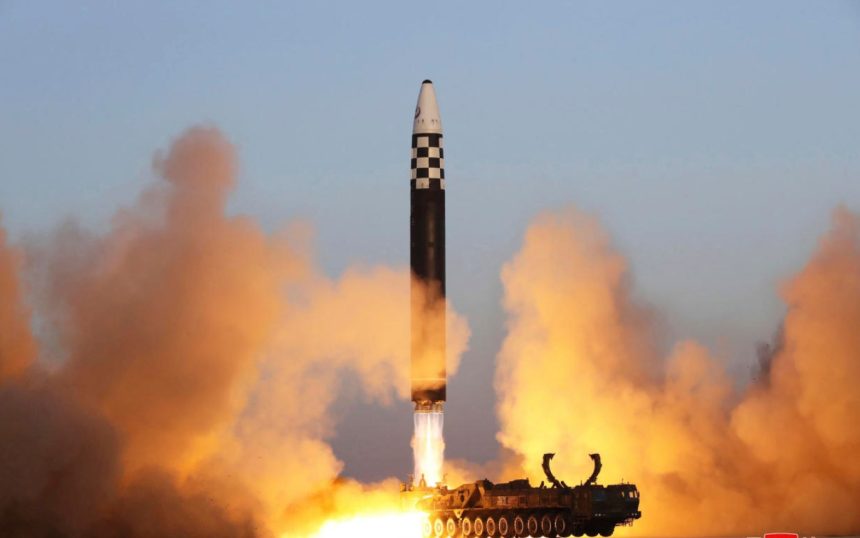South Korea claimed North Korea launched a short-range ballistic missile into the sea on Sunday, perhaps in violation of the recent steps taken by Washington and Seoul to reinforce their nuclear deterrent preparations against North Korean threats.
The missile was launched from a region near the North Korean capital of Pyongyang at roughly 10:38 p.m. and traveled 570 kilometers (354 miles) before falling in the sea, according to South Korea’s Joint Chiefs of Staff.
The South Korean military said it was sharing the launch information with the US and Japan to further assess the data while being prepared for any North Korean military activity. It called the launch a “clear violation” of U.N. Security Council resolutions prohibiting North Korean missile launches.
Tensions on the Korean Peninsula are at an all-time high, with North Korean leader Kim Jong Un speeding the growth of his nuclear and missile programs and flaunting an escalatory nuclear policy that allows for the use of nuclear weapons as a last resort.
The US, South Korea, and Japan have responded by expanding the prominence of their trilateral relationship in the area, as well as strengthening joint military drills, which Kim regards as invasion preparations.
North Korea’s latest launch came after high-level security talks in Washington over the weekend between American and South Korean officials, during which they agreed to update their nuclear deterrence and contingency strategies and include nuclear operation scenarios in their combined military exercises next summer to deal with the North’s evolving threats.
Shortly after the launch, North Korea’s Defense Ministry issued a statement condemning Washington and Seoul’s decision to include nuclear operation scenarios in joint drills, calling it an open threat to use nuclear weapons against the North and promising unspecified “offensive countermeasures.”
The North Korean ministry also chastised the US for progressively sending massive military assets to South Korea in a show of force, including strategic bombers and nuclear-powered submarines, which it claimed constituted a “reckless military threat” destabilizing the area.
The missile launch was not mentioned by the government.
South Korea has been seeking more guarantees from the US that it will deploy its nuclear capabilities promptly and forcefully to defend its ally in the case of a North Korean nuclear assault.
Since the beginning of 2022, the North has tested more than 100 missiles, taking advantage of the distraction provided by Russia’s full-scale invasion of Ukraine to accelerate the growth of his military nuclear program, which he regards as his best guarantee of survival.
North Korea launched intercontinental ballistic missiles with a potential range to reach the US mainland in recent months, as well as a series of launch events the North claimed as simulated nuclear strikes on targets in South Korea.
North Korea also launched its first military surveillance satellite last month, which Kim characterized as critical for monitoring US and South Korean military activity and increasing the threat of his nuclear-capable missiles.
Washington and its allies are also concerned about a possible weapons alliance between North Korea and Russia. They are concerned that Kim is transferring desperately needed armaments to Russian President Vladimir Putin in return for Russian technical assistance to strengthen his nuclear-armed military.















